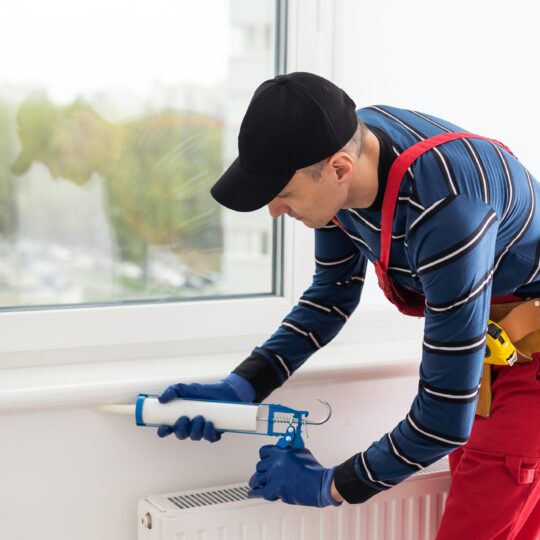Can Exclusion Alone Be Enough to Keep Pests Out?

Pest control typically involves using human-safe pesticides to create a barrier outside of the property that pests cannot safely cross, while also potentially treating the inside of the property to eliminate any pests that are inside.
But it’s not the only method of pest control.
Pest exclusion, also known as pest-proofing, is a method focused on sealing entry points and creating barriers to prevent pests from accessing your home or property without pesticides. The idea is that, if we seal any entrance point a pest may use to get into your property, then we won’t have to worry as much about pests entering at all and the added pesticide barrier is just to add that little bit of extra protection.
But is it enough on its own?
For many properties, exclusion is highly effective when implemented correctly. However, it is not always sufficient on its own, particularly in areas prone to high pest activity, those with existing infestations, and also those that want to take a more realistic approach to property pest management.
How Pest Exclusion Works
Exclusion focuses on removing opportunities for pests to enter a property. This involves identifying and sealing gaps, cracks, and other vulnerabilities that pests exploit. Key areas of focus often include:
- Doors and Windows – Installing weather stripping and repairing damaged screens prevents pests from slipping through gaps.
- Foundation and Walls – Filling cracks, gaps, and crevices with durable materials like caulk or steel wool to block access.
- Vents and Utility Openings – Covering vents and utility penetrations with fine mesh screens to prevent pests like rodents and insects from entering.
- Roof and Attic – Sealing gaps around roofing materials, chimneys, and vents to deter pests such as birds and squirrels.
These measures are proactive and can significantly reduce the likelihood of pests gaining access to your home.
When Exclusion Alone May Fall Short
Although exclusion is a valuable first step, relying on it exclusively is often not enough. The primary reason is because, no matter how amazing your pest control company is, when you’re talking about potentially pin-sized holes, there is simply no realistic way to do it all. There are always going to be entrance points. Our goal is just to decrease as many of them as possible, limiting how many places a pest can enter from.
In addition, some other factors that limit its effectiveness include:
- Persistent or Aggressive Pests – Pests like rats and squirrels can chew through some exclusion materials, finding new ways to enter.
- Unaddressed Attractants – Food, water, and shelter inside or near the property can draw pests despite exclusion efforts.
- Existing Infestations – Exclusion cannot address pests already residing within the structure. These must be removed before exclusion is implemented.
- Seasonal Influxes – Certain times of the year, like fall and winter, may increase pest activity, requiring additional control measures.
- Windows/Doors Opening – Even if you seal all entrance points, you’re going to open the door, you’re going to open windows, and pests can still enter.
In these cases, exclusion is best used alongside complementary strategies, such as regular maintenance, sanitation practices, and, when necessary, targeted pest control solutions.
Why a Comprehensive Approach Works Best
A successful pest management plan often combines exclusion with other practices to ensure long-term protection. This includes:
- Maintaining Cleanliness – Removing potential food sources, such as crumbs or unsealed trash, helps reduce attraction.
- Landscaping Maintenance – Keeping vegetation trimmed and away from the structure minimizes access points for pests.
- Monitoring and Inspection – Regular checks for signs of pests or new vulnerabilities allow for timely intervention.
- Targeted Treatments – In cases of high activity, additional pest control methods like baiting or trapping may be necessary.
By integrating exclusion with these practices, you can create a multi-layered defense system that is more effective than exclusion alone.
Moving Toward a Pest-Free Property
While exclusion is a powerful tool for keeping pests out, its success depends on proper implementation and maintenance. For the best results, consider combining exclusion with other preventative and corrective measures to ensure your property remains protected from pests year-round. If you’d like more information about our pest control services, please reach out to ExtermPRO today.